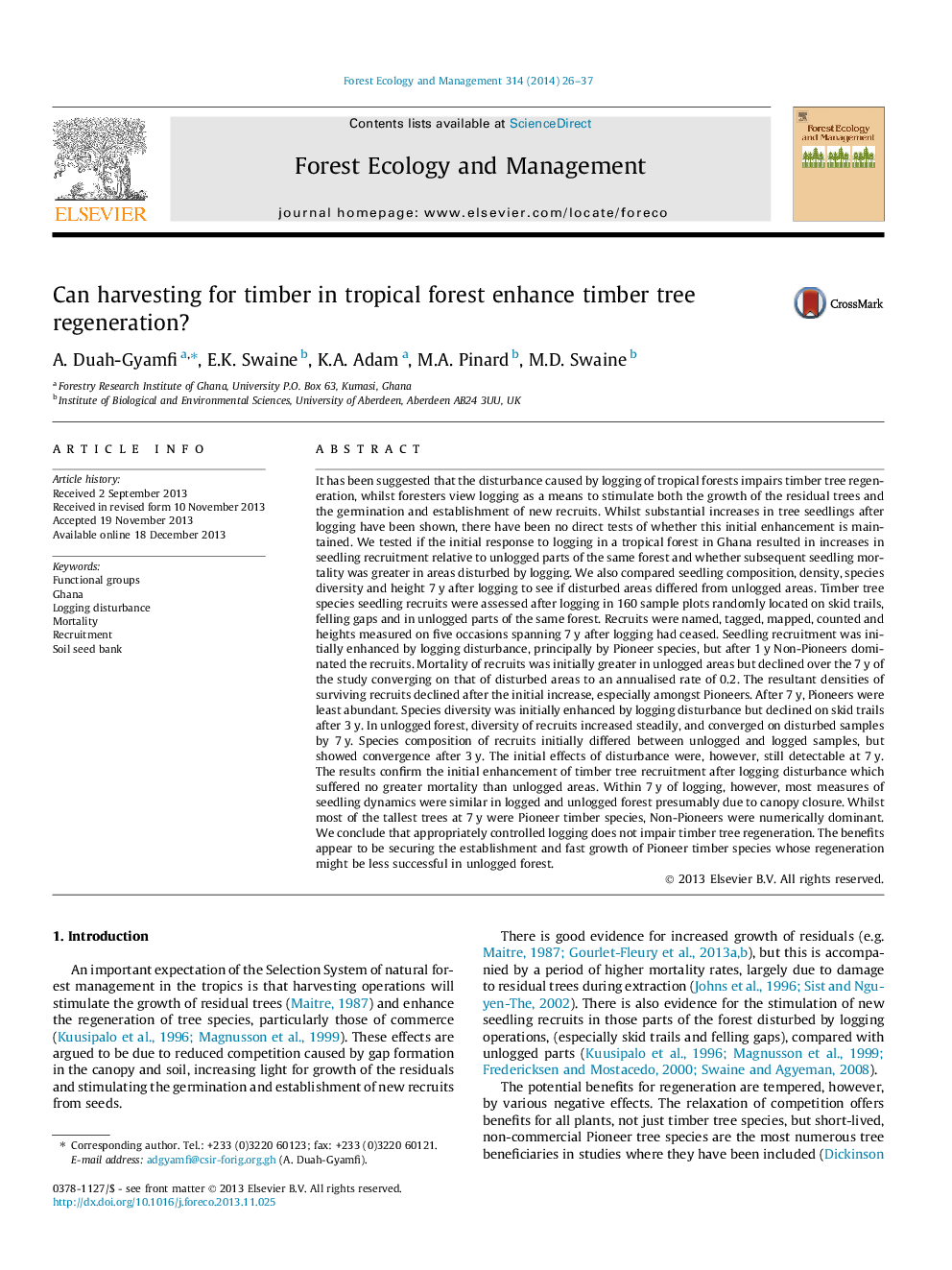| Article ID | Journal | Published Year | Pages | File Type |
|---|---|---|---|---|
| 86931 | Forest Ecology and Management | 2014 | 12 Pages |
•Logging enhanced initial seedling recruitment in areas disturbed by logging.•Mortality was initially greater in unlogged areas but converged by 7 y.•After 7 y, most measures of seedling dynamics were similar amongst sites.•Logging, if properly controlled, does not impair timber tree regeneration.
It has been suggested that the disturbance caused by logging of tropical forests impairs timber tree regeneration, whilst foresters view logging as a means to stimulate both the growth of the residual trees and the germination and establishment of new recruits. Whilst substantial increases in tree seedlings after logging have been shown, there have been no direct tests of whether this initial enhancement is maintained. We tested if the initial response to logging in a tropical forest in Ghana resulted in increases in seedling recruitment relative to unlogged parts of the same forest and whether subsequent seedling mortality was greater in areas disturbed by logging. We also compared seedling composition, density, species diversity and height 7 y after logging to see if disturbed areas differed from unlogged areas. Timber tree species seedling recruits were assessed after logging in 160 sample plots randomly located on skid trails, felling gaps and in unlogged parts of the same forest. Recruits were named, tagged, mapped, counted and heights measured on five occasions spanning 7 y after logging had ceased. Seedling recruitment was initially enhanced by logging disturbance, principally by Pioneer species, but after 1 y Non-Pioneers dominated the recruits. Mortality of recruits was initially greater in unlogged areas but declined over the 7 y of the study converging on that of disturbed areas to an annualised rate of 0.2. The resultant densities of surviving recruits declined after the initial increase, especially amongst Pioneers. After 7 y, Pioneers were least abundant. Species diversity was initially enhanced by logging disturbance but declined on skid trails after 3 y. In unlogged forest, diversity of recruits increased steadily, and converged on disturbed samples by 7 y. Species composition of recruits initially differed between unlogged and logged samples, but showed convergence after 3 y. The initial effects of disturbance were, however, still detectable at 7 y. The results confirm the initial enhancement of timber tree recruitment after logging disturbance which suffered no greater mortality than unlogged areas. Within 7 y of logging, however, most measures of seedling dynamics were similar in logged and unlogged forest presumably due to canopy closure. Whilst most of the tallest trees at 7 y were Pioneer timber species, Non-Pioneers were numerically dominant. We conclude that appropriately controlled logging does not impair timber tree regeneration. The benefits appear to be securing the establishment and fast growth of Pioneer timber species whose regeneration might be less successful in unlogged forest.
